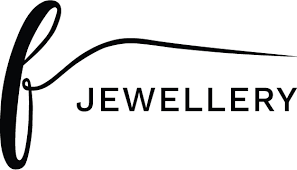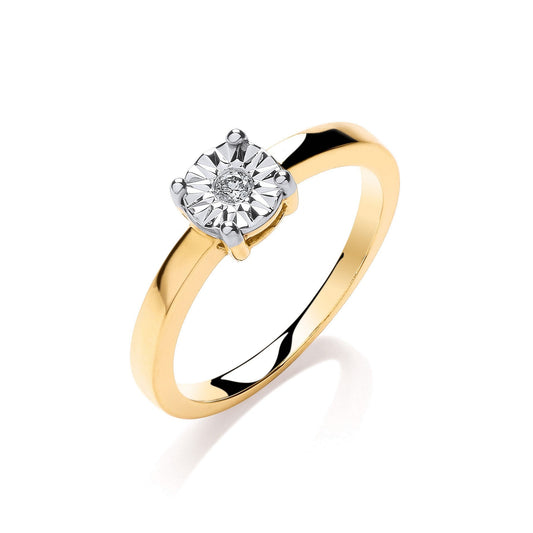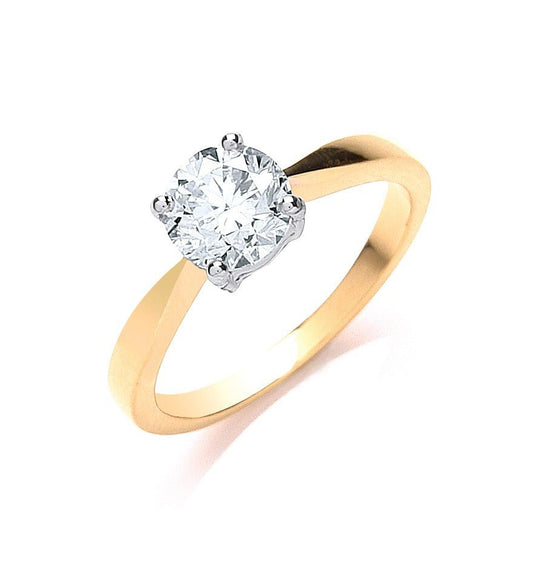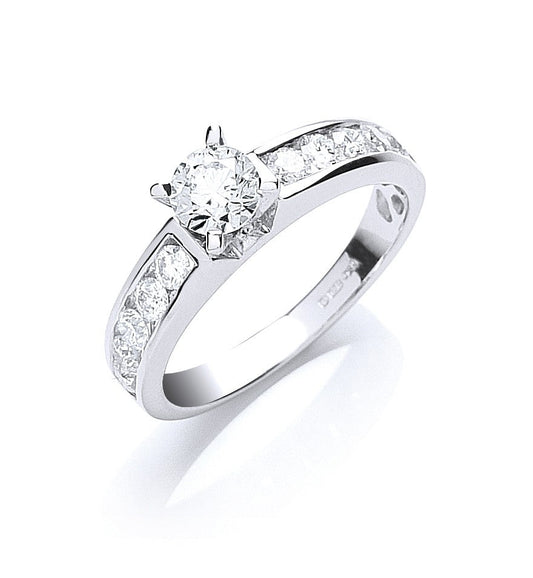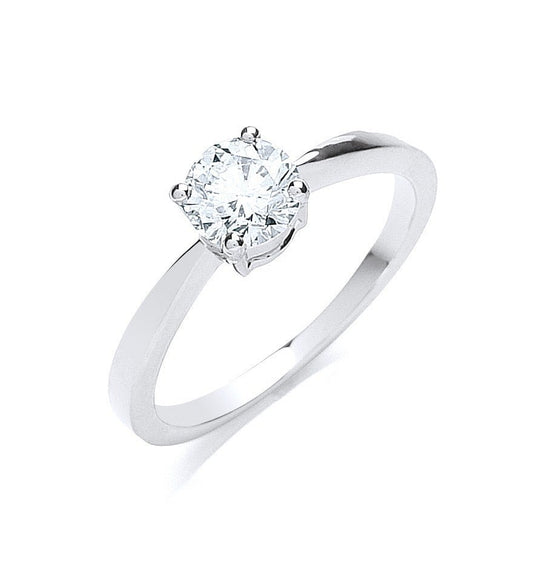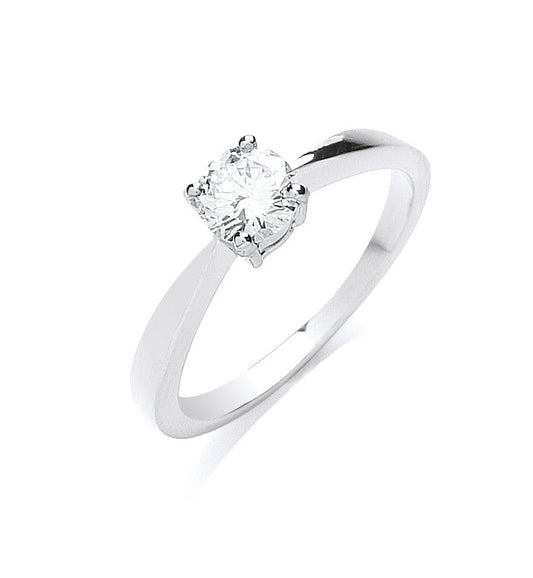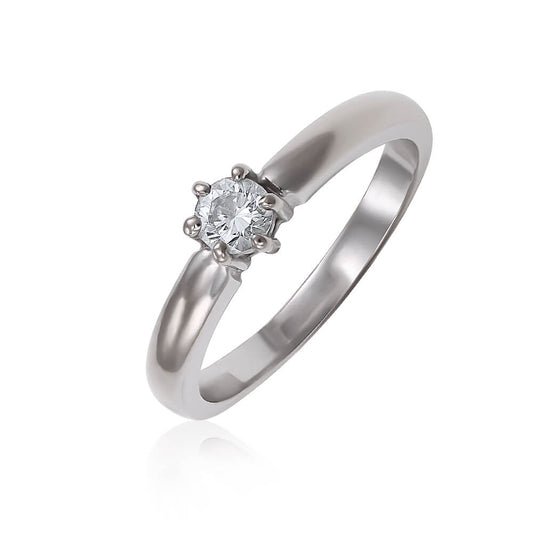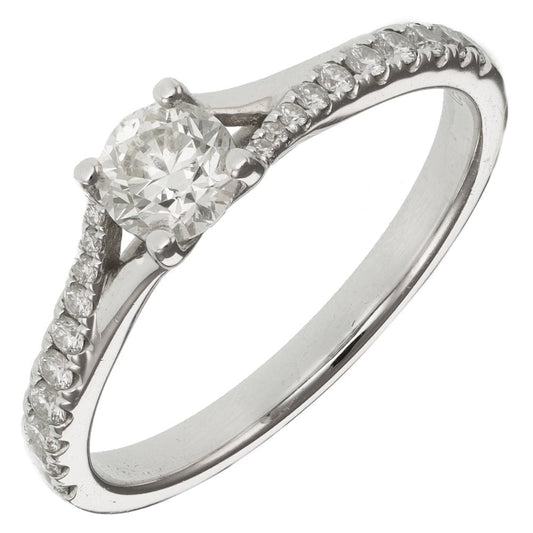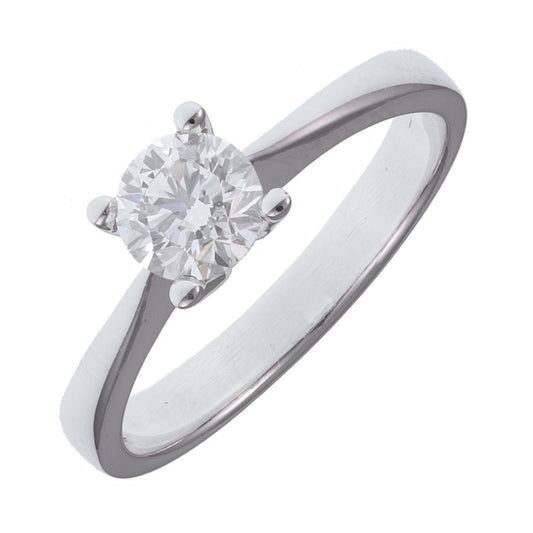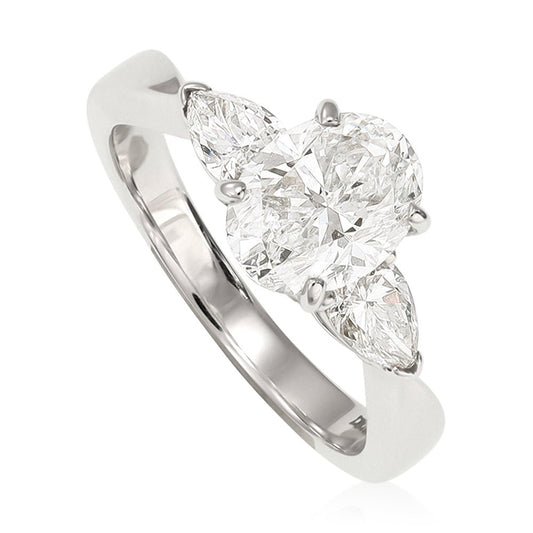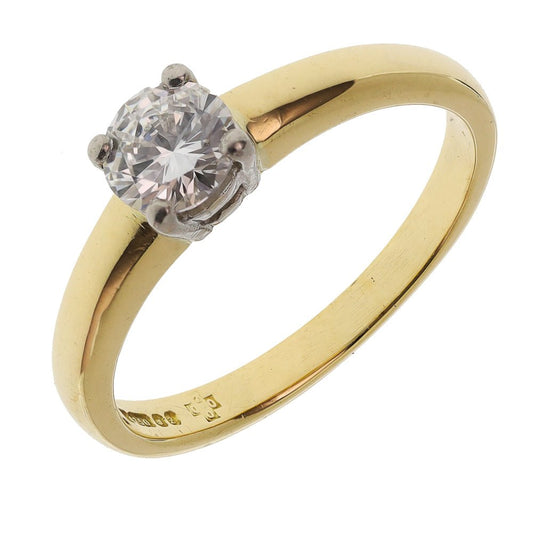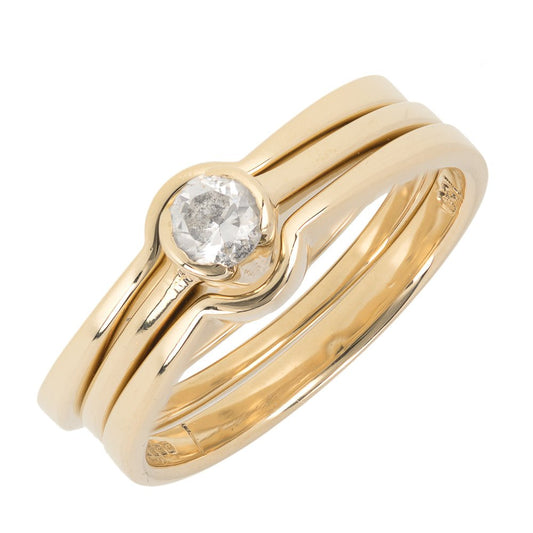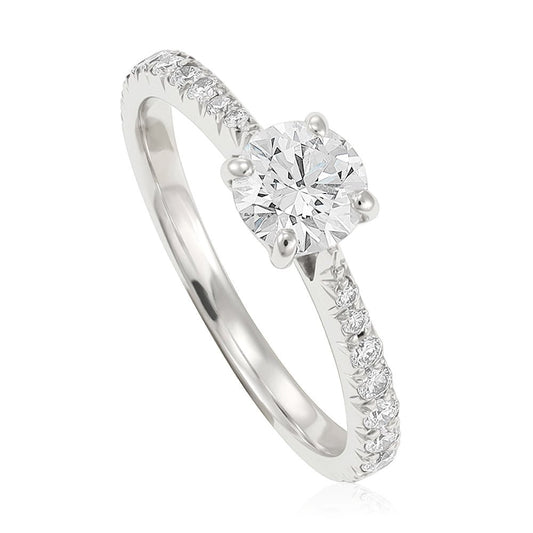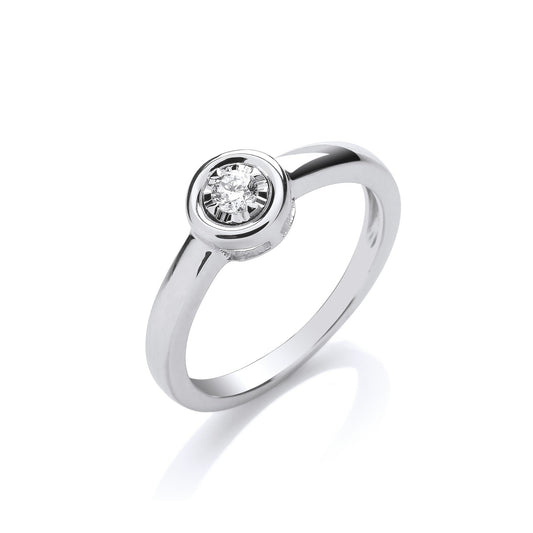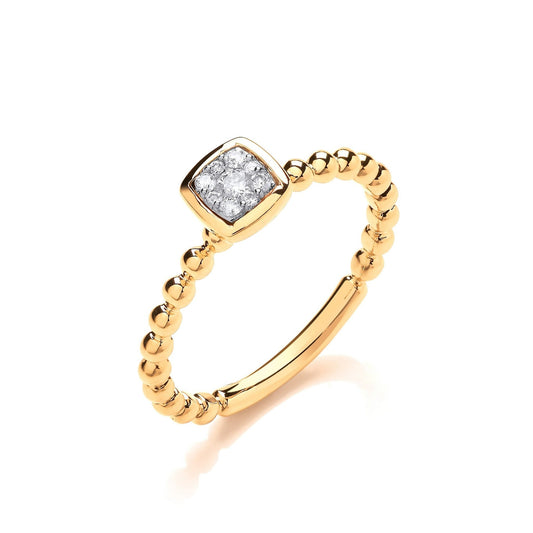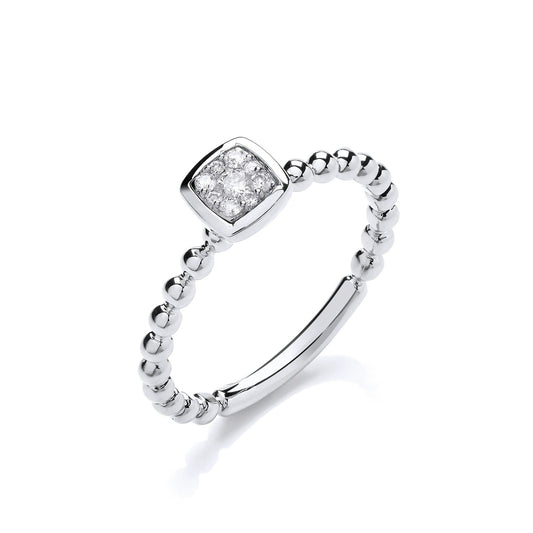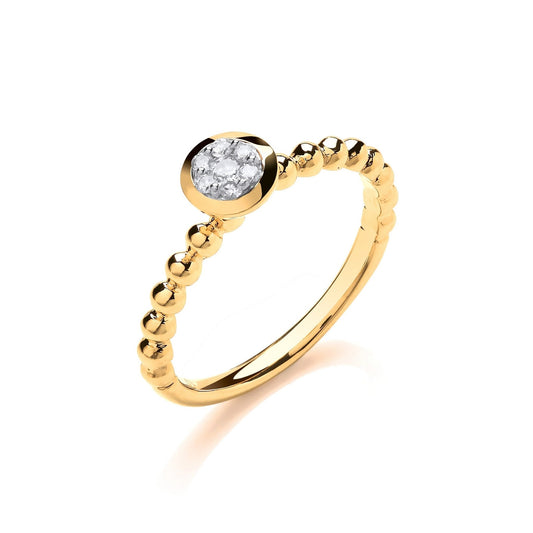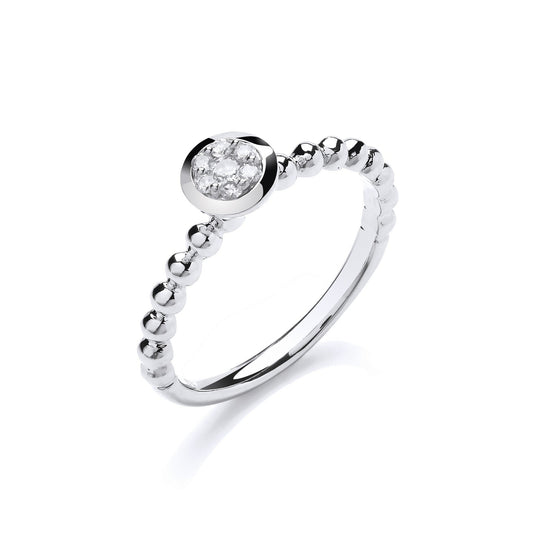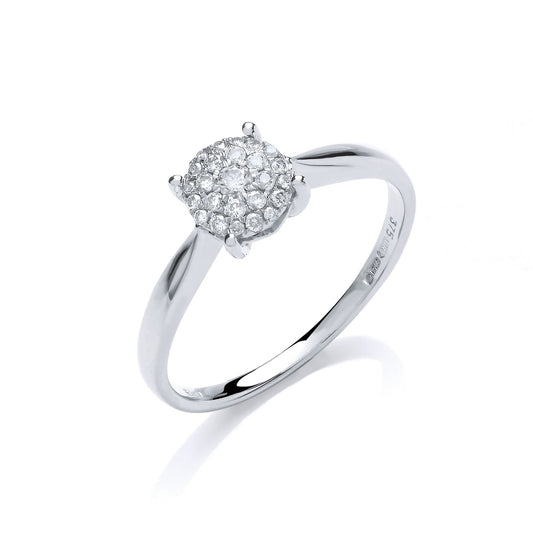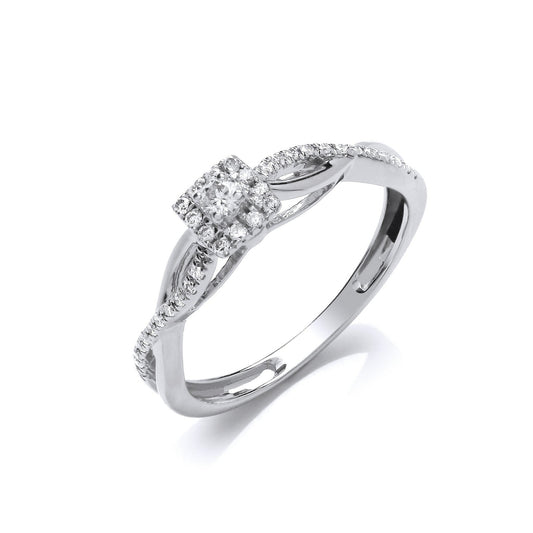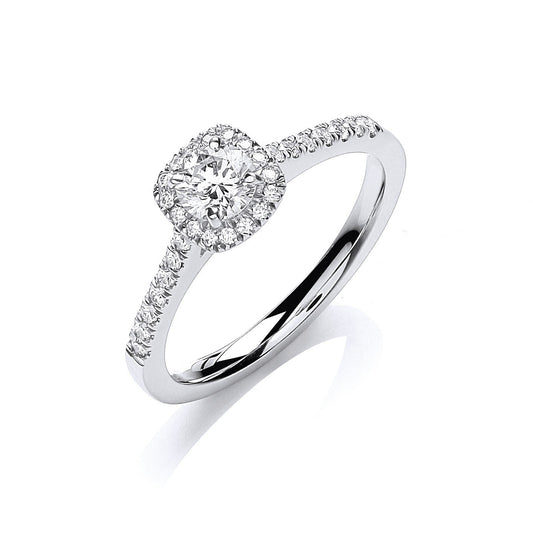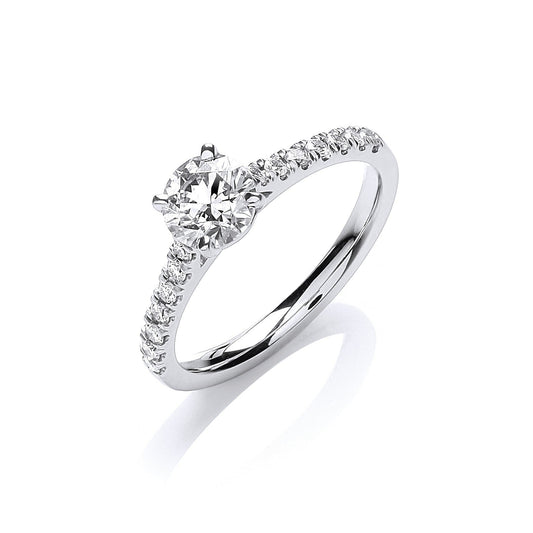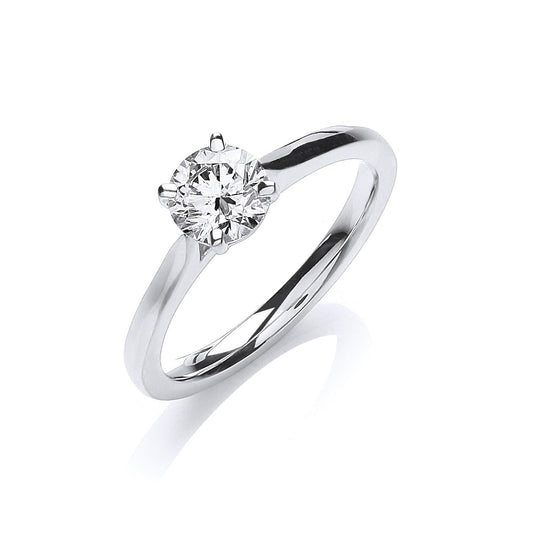Collection: Gold Engagement Rings
-
9ct Solid Yellow Gold 0.05ct Diamond Solitaire Ring 111516
Regular price £260.00 GBPRegular priceUnit price / per£420.00 GBPSale price £260.00 GBPSale -
18ct Solid Yellow Gold 1.00ct Diamond Engagement Ring 111208
Regular price £6,545.00 GBPRegular priceUnit price / per£11,425.00 GBPSale price £6,545.00 GBPSale -
18ct Solid White Gold 1.00ct Brilliant Cut Centre Diamond Ring 111453
Regular price £2,695.00 GBPRegular priceUnit price / per£4,690.00 GBPSale price £2,695.00 GBPSale -
18ct Solid White Gold 0.70ct Diamond Solitaire Engagement Ring 111292
Regular price £3,170.00 GBPRegular priceUnit price / per£5,515.00 GBPSale price £3,170.00 GBPSale -
18ct Solid White Gold 0.50ct Solitaire Diamond Engagement Ring 111291
Regular price £1,890.00 GBPRegular priceUnit price / per£3,295.00 GBPSale price £1,890.00 GBPSale -
9ct yellow gold Pre-owned Single diamond ring 8000031
Regular price £180.00 GBPRegular priceUnit price / per£315.00 GBPSale price £180.00 GBPSale -
18ct Solid White Gold Pre-owned Diamond Ring 3001550
Regular price £650.00 GBPRegular priceUnit price / per£1,100.00 GBPSale price £650.00 GBPSale -
18ct Solid Yellow Gold Pre-Owned 0.71ct Diamond Engagement Ring Ring - 2.79g 6001227
Regular price £900.00 GBPRegular priceUnit price / per£1,500.00 GBPSale price £900.00 GBPSale -
Pre-owned 18ct White Gold 0.50ct Single Stone Diamond Ring F/SI1
Regular price £1,515.00 GBPRegular priceUnit price / per£1,920.00 GBPSale price £1,515.00 GBPSale -
Pre-owned 18ct White Gold 1.96ct F/SI2 Diamond Engagement Ring
Regular price £6,515.00 GBPRegular priceUnit price / per£10,520.00 GBPSale price £6,515.00 GBPSale -
Pre-owned 18ct Yellow & White Gold Single Stone 0.50ct Diamond Engagement Ring
Regular price £1,265.00 GBPRegular priceUnit price / per£2,120.00 GBPSale price £1,265.00 GBPSale -
Pre-owned 18ct Yellow & White Gold Single Stone Diamond Engagement Ring
Regular price £120.00 GBPRegular priceUnit price / per£170.00 GBPSale price £120.00 GBPSale -
Pre-owned 18ct Gold Solitaire Bridal Set CZ Ring - 6g
Regular price £665.00 GBPRegular priceUnit price / per£920.00 GBPSale price £665.00 GBPSale -
Pre-owned 18ct White Gold 0.91ct E/VS2 Diamond Solitaire Ring Size K
Regular price £2,515.00 GBPRegular priceUnit price / per£2,820.00 GBPSale price £2,515.00 GBPSale -
9ct Solid W Gold .10ct Diamond RubOver Illusion Set Solitaire Ring 111640
Regular price £345.00 GBPRegular priceUnit price / per£565.00 GBPSale price £345.00 GBPSale -
9ct Solid Yellow Gold 0.10ct Beaded Shank Square Top Ring 111622
Regular price £245.00 GBPRegular priceUnit price / per£400.00 GBPSale price £245.00 GBPSale -
9ct Solid White Gold 0.10ct Beaded Shank Square Top Ring 111621
Regular price £245.00 GBPRegular priceUnit price / per£400.00 GBPSale price £245.00 GBPSale -
9ct Solid Yellow Gold 0.10ct Fancy Beaded Shank Ring 111620
Regular price £235.00 GBPRegular priceUnit price / per£380.00 GBPSale price £235.00 GBPSale -
9ct Solid White Gold 0.10ct Fancy Beaded Shank Ring 111619
Regular price £270.00 GBPRegular priceUnit price / per£440.00 GBPSale price £270.00 GBPSale -
9ct Solid White Gold 0.15ct Diamond Pave Solitaire Ring 111584
Regular price £355.00 GBPRegular priceUnit price / per£590.00 GBPSale price £355.00 GBPSale -
9ct Solid White Gold 0.20ct Diamond Solitaire Style Ring 111563
Regular price £380.00 GBPRegular priceUnit price / per£630.00 GBPSale price £380.00 GBPSale -
18ct Solid White Gold 0.50ct Certificated Diamond Engagement Ring 111542
Regular price £1,725.00 GBPRegular priceUnit price / per£2,985.00 GBPSale price £1,725.00 GBPSale -
18ct Solid White Gold 0.90ct Diamond Certificated Engagement Ring 111540
Regular price £3,730.00 GBPRegular priceUnit price / per£6,485.00 GBPSale price £3,730.00 GBPSale -
18ct Solid White Gold 0.70ct Diamond Certificated Engagement Ring 111539
Regular price £3,500.00 GBPRegular priceUnit price / per£6,090.00 GBPSale price £3,500.00 GBPSale
Buy engagement rings made of 14 carat gold in FJewellery online
Every woman has an idea of what her engagement ring should be. Today’s jewellery industry offers a wide range of these products. Everyone finds the perfect piece of jewellery for themselves. The FJewellery online shop offers engagement rings in different precious materials and gemstones in a variety of styles. These include a 14k gold engagement ring. Rings in this category are relatively inexpensive but very elegant and practical. Yellow gold is also a classic choice for engagement and wedding ceremonies.
Features of 14 karat gold
The 14ct marking is often found on gold jewellery. What does it mean? The carat system is the 5 standard tests:
- 24,
- 18,
- 14,
- 10,
- 9.
14-carat gold occupies the middle position in this system. The alloy has the best characteristics in terms of price-quality ratio. Its high percentage of alloyed metals makes it resistant to external influences. It is ideal for jewellery for everyday wear. That’s why 14 carat gold engagement rings are so popular. They go well with other gold jewellery, such as delicate earrings or initial necklaces.
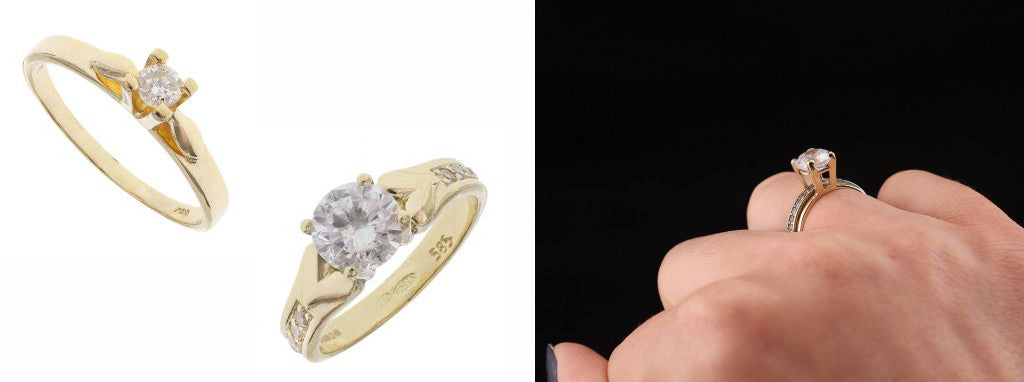
It is traditional to give an engagement ring with gems. These rings can be designed in a variety of styles. It can be a model with one large gemstone, three stones, small stones around the rim of the piece (an eternity ring) and many others. Diamonds are most suitable for a special occasion. This gemstone is considered a symbol of pure and deep feelings. You can choose 14kt gold engagement rings from a wide assortment. It will be in harmony with your favourite fancy earrings, a talisman pendant or a cross that you will never part.
How to buy a ring online
Online shopping is cost-effective and cosy. Prices in online shops are lower than in jewellery salons. And you can buy a piece of jewellery in a few minutes without leaving your home. You need to know the size of the ring that fits well on the finger. The catalogue has high-quality pictures and descriptions, the worth of each model. All of this will help you make a choice.
The FJewellery online shop offers a huge range of jewellery for her and for him. From jewellery for everyday wear to special occasions is in sale: from buckle rings to engagement and wedding rings. You can also choose a set of jewellery in a single style or create an individual piece of jewellery. The latter will be made in the company's jewellery workshop.
